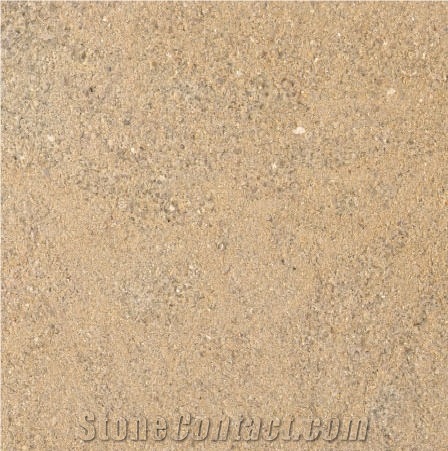Niederschona Sandstone
Order Now
About
Material Type: Sandstone
Origin: Germany
(Niederschöna, Tharandter Wald, Freiberg)
Germany
(Niederschöna, Tharandter Wald, Freiberg)
 Germany
(Niederschöna, Tharandter Wald, Freiberg)
Germany
(Niederschöna, Tharandter Wald, Freiberg)
Priamry Color(s): Beige
Recommended Usage:Building stone,countertops, sinks, monuments, pool coping, sills, ornamental stone, interior, exteri
Finishing Surface:Sawn Cut, Honed, Natural Surface, Bush Hammered, Chiseled
Additional Names:Niederschona,Niederschona Sandstein
Description
show more
hide
FAQ
Ask a Question

Can Germany's Niederschona Sandstone be used in landscaping?
Yes, Germanys Niederschona Sandstone can be used in landscaping. Niederschona Sandstone is a type of sandstone that is known for its durability and natural beauty, making it a popular choice for various landscaping applications. It can be used for building retaining walls, walkways, patios, and other outdoor features. Additionally, Niederschona Sandstone can be used for decorative purposes, such as creating stone sculptures or adding natural accents to gardens and landscapes.
show more
hide

How thick is Germany's Niederschona Sandstone slabs?
The thickness of Germanys Niederschona Sandstone slabs can vary depending on the specific source and intended use. However, in general, Niederschona Sandstone slabs are available in thicknesses ranging from 2 centimeters (0.79 inches) to 10 centimeters (3.94 inches) and beyond.
show more
hide

Can Germany's Niederschona Sandstone be used in a bathroom?
Yes, Germanys Niederschona Sandstone can be used in a bathroom. Sandstone is a common natural stone material used in various areas of a home, including bathrooms. Its durability and ability to withstand moisture make it suitable for bathroom applications. However, it is important to note that sandstone is a porous material, so it may require sealing to prevent water penetration and staining. Regular cleaning and maintenance will also be necessary to keep the sandstone in good condition.
show more
hide

Can Germany's Niederschona Sandstone be used exterior applications in hot climates?
Germanys Niederschona Sandstone can be used for exterior applications in hot climates, but it is important to take into consideration some factors.
Niederschona Sandstone is a dense and durable material that can withstand the heat. However, it is always recommended to consult with a professional stone supplier or architect familiar with the specific conditions of the desired location to determine whether it is suitable for the particular climate.
One potential concern is the expansion and contraction of the sandstone due to temperature changes. In hot climates, where the temperatures can vary significantly between day and night, this can potentially cause the stone to crack or deteriorate over time. To mitigate this risk, proper installation techniques such as using appropriate expansion joints and ensuring proper drainage are essential.
Additionally, the surface finish of the Niederschona Sandstone can influence its performance in hot climates. A rougher or more textured surface may be a better choice as it can provide better heat dissipation and minimize the absorption of heat, helping to keep the stone cooler.
Overall, while Niederschona Sandstone can be used in exterior applications in hot climates, it is crucial to evaluate the specific conditions and consult with professionals to ensure the best performance and longevity of the stone.
show more
hide

What grade is Germany's Niederschona Sandstone?
Germanys Niederschona Sandstone, also known as Elbsandstein, is classified as a lithostratigraphic unit from the lower-middle Jurassic period. It is primarily found in the Elbe Sandstone Mountains and is comprised of sedimentary rock formed approximately 190 to 172 million years ago. As a lithostratigraphic unit, it does not have a specific grade like grades used in education. Instead, it represents a specific geological formation.
show more
hide

What is the coefficient of friction of Filled Germany's Niederschona Sandstone tiles?
To determine the coefficient of friction of a specific material such as Filled Germanys Niederschona Sandstone tiles, you would need to refer to technical data provided by the manufacturer or conduct laboratory testing.
The coefficient of friction (COF) represents the ratio of the force of friction between two surfaces in contact to the force pressing them together. It is generally measured as a number between 0 and 1, with higher values indicating greater friction.
Factors that can affect the COF of a tile include the surface finish, presence of any coatings or sealants, and external factors such as moisture or contaminants. Therefore, its important to consult the manufacturer or conduct appropriate testing to obtain accurate and up-to-date information on the coefficient of friction for Filled Germanys Niederschona Sandstone tiles.
show more
hide

Is Germany's Niederschona Sandstone an expensive stone?
The price of Niederschona Sandstone can vary depending on factors such as quality, availability, and market demand. However, in general, Niederschona Sandstone is considered to be a moderately priced natural stone. As with any stone, the cost can also be influenced by factors such as transportation and installation expenses. It is advisable to contact suppliers or stonemasons directly for accurate and up-to-date pricing information.
show more
hide

Are there color variations of Germany's Niederschona Sandstone?
Yes, Germanys Niederschona Sandstone can have color variations. Its base color is typically a light to medium brown, but it can also feature tones of gray, yellow, orange, and red. These variations in color are mainly due to differences in mineral content and weathering patterns within the sandstone. Additionally, the presence of fossils and other sedimentary features can also contribute to the overall coloration of the stone.
show more
hide
Product & Prices
Post Your Request
*From:
*Request:
The request includes: 1. surface finished, size 2. quantity required
Send







